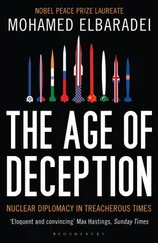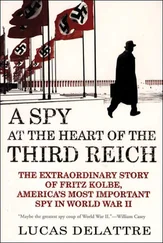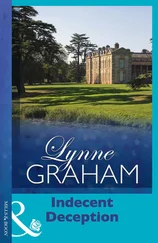We can no longer help you. Will be sending no further physical or material help. All safe houses are blown…This is our last message until better times. We will listen to you until 30 June. Thereafter God help you.
By this stage the real partisan forces numbered only a few thousand. Exhausted and demoralised, with their national identity being eradicated by the occupation 29and with no sign of the hoped-for Third World War in sight, their mood was bitter. The failure of the West to support the Hungarian uprising in 1956 was the last straw: in the words of the Estonian historian Mart Laar, ‘they finally realised that the white ships were not coming’. Elena Jučiūtė, a Lithuanian dissident deported for fifteen years for her ‘anti-Soviet’ activities, wrote in her diary that:
the Western states, which speak so many beautiful words about human rights, the right of national self-determination, freedom, humanitarianism…were unwilling to support with a firm word a small nation, heroically fighting for its freedom. None of us had expected such turpitude from the free world; we had a better opinion of them, and for this reason, the disappointment was devastating. 30
By the end it was only the brutality of the Soviet authorities that kept the spark of resistance alive: if death in battle was bad, capture was far worse. A dry medical account of the wounds on the body of the American-born last leader of the Lithuanian partisan movement Adolfas Ramanauskas, codenamed Vanagas (Hawk), finally captured with his wife in October 1956 and tortured for a year before his execution on 9 November 1957, gives an indication of the horrors that awaited the inmates of the KGB’s dungeons:
The right eye is covered with haematomas, on the eyelid there are six stab wounds made, judging by their diameter, by a thin wire or nail going deep into the eyeball. Multiple haematomas in the area of the stomach, a cut wound on a finger of the right hand. The genitalia reveal the following: a large tear wound on the right side of the scrotum and a wound on the left side, both testicles and spermatic ducts are missing. 31
Probably the last active partisans, the Lithuanians Antanas Kraujelis and Pranas Končius, were hunted down in 1965; a few others continued living illegally in the forests or concealed in family members’ houses for years after that. Jānis Pīnups, a Latvian, lived underground during the entire fifty-year period of Soviet occupation, emerging from his ‘illegal’ existence only after the last Russian troops withdrew from the Baltic in 1994. 32
In all, Operation Jungle sent at least forty-two Estonians, Latvians and Lithuanians back to their homelands, usually in the small hours of moonless summer nights. Not only was their own fate tragic: their presence was toxic to their cause. If they made contact with genuine partisans, the result was disaster. It stoked Soviet paranoia and discredited the West. The bravery of the resistance proved less inspiring to later dissidents than the legacy of failure. The demoralisation in SIS, and corrosion of trust with the CIA, was lasting. For those inside the Soviet empire, the idea that the West was a reliable ally in the struggle against communism – and even that the struggle was worth waging – had taken a beating. In the West, the knowledge that the Soviet side had so easily penetrated the anti-Soviet operation, probably right from the beginning, was a huge hurdle for anyone suggesting anything bold in the coming years. That glum mood was compounded when news broke of the treachery of Kim Philby. It was easy to think that Western spies, particularly British ones, were worse than useless.
The great puzzle of Operation Jungle, and of its American and Swedish counterparts, is who at what stage on the Western side realised that the operations were blown, and how they reacted. The conventional account, as outlined by Tom Bower in Red Web , suggests all-encompassing naivety and incompetence. But it does not quite fit all the facts. One fragment of possible evidence for an alternative version of events comes from Mart Männik’s memoirs. Confronted by his captors with every detail of his mission, the resourceful SIS man soon realised that the entire operation had been a sinister farce from the moment he set foot in Estonia. Yet he did not despair, instead working out if by any means he could warn Rebane, thus at least sparing the lives of other Estonians in London. In mid 1953, having spent the intervening months in a prison cell teaching himself Russian from Soviet propaganda books, Männik was instructed to send some messages back to London. After sending seven flawless ones, he claims he carefully inserted a secret code (using the three-dot ‘S’ in Morse code rather than the four-dot ‘H’). This was a signal agreed with Rebane in case he found himself having to make a forced transmission.
He sent a second signal during a meeting with ‘Albert’, an Estonian partisan unaware of the KGB deception operation who was being sent back to Britain. Männik’s job was to reassure him. Instead, risking torture and death, he did the opposite, snatching a chance to whisper: ‘Tell Robert (Rebane’s code name), and only him, that “H” has been “S” from the very beginning.’ It is not clear if the message was understood or got through. In interviews with Estonian officials after 1991 ‘Albert’ maintained that he had not heard any such words from Männik. [59] bg His real name was Nikolai Urm. He worked until retirement in the electrical department of the John Lewis department store and died in 2005 in the drab London suburb of Neasden, where a rusty horseshoe (characteristic for Estonian homes) over the doorway of his house in Bermans Way is the only remaining sign of his remarkable career. If by any chance his niece, Karen ‘Kim’ Toley, should read this book I would be most grateful to hear from her.
But other warnings did get through. Several other SIS men had on their return to London expressed suspicions about their ‘partisan’ hosts. Ludis Upāns, the real partisan returned to London in 1952 by his KGB hosts because of his excessive zeal, later claimed that he had told SIS that the resistance was bogus. 33A KGB man sent to London in 1954 posing as a partisan leader was confronted with the puzzle of the radioactive water and suggested that perhaps one group of partisans had been penetrated, while his own was sound. In 1955 Rebane was alerted personally by a former wartime comrade, turned by the KGB and sent to lure him back to Estonia for a show trial, who confessed his mission during a drunken evening. At least two phoney partisans brought to London had been spotted by chance as communist collaborators by other émigrés.
It is quite possible, as Bower argues, that SIS simply ignored such warnings because self-deception and self-interest overlapped. But continuing with Operation Jungle may have also been a master-stroke of reverse deception. If the KGB could be made to believe it had fooled the British completely, it would greatly increase the chance of running real operations. One piece of evidence comes from Captain Bernhard Nelberg, an Estonian refugee in London, who in August 1950 wrote to his country’s ambassador, August Torma (himself on SIS’s books) to say that he was going on a dangerous mission during which he might be captured or killed by the Soviets. In that event, he said, he bequeathed his property to the Estonian embassy in London. (This was maintaining a precarious existence on the fringes of official diplomacy. It still had staff and a building, and plenty of work. But the country it represented had been wiped from the map.) 34Although I can find no trace of Captain Nelberg’s mission, it was not part of Operation Jungle.
Harder evidence comes from an operation involving the Estonian Voldemar Kiik, one of the most successful British agents of the post-war era. His story is almost entirely unknown outside Estonia, where he was buried with military honours in the national cemetery, next to Rebane, after his death in 2002. His mission was to reconnoitre the airfield at Tartu, Estonia’s second city. Details of his mission remain classified to this day, but it would have been of huge interest to British and American intelligence to know about any hardened hangars, the quality and quantity of air defences, and signs of nuclear weapons storage and transport. Kiik was a medical student in London when Rebane approached him, probably in 1950. He was the ideal recruit – brainy, determined and a cut above the other Estonian young men in London, whose patriotism often outweighed their other talents (they, in turn, found his successful womanising tiresome). He was already battle-hardened. Mobilised by the Red Army in 1940, he jumped off a troop train and hid in a forest before being conscripted by the Germans. Wounded in the head in the battle of Velikaya Luka near Leningrad, he was left for dead during a German retreat, only to be rescued during a counterattack. He detested both occupying powers equally. Rather than exchange the mandatory ‘ Heil Hitler! ’ greeting, he and the other Estonians in his unit would shout ‘ Ei Ütle! ’ (Don’t Say!). The pronunciation was close enough to fool the Germans, and gave a pleasant tingle of resistance.
Читать дальше












